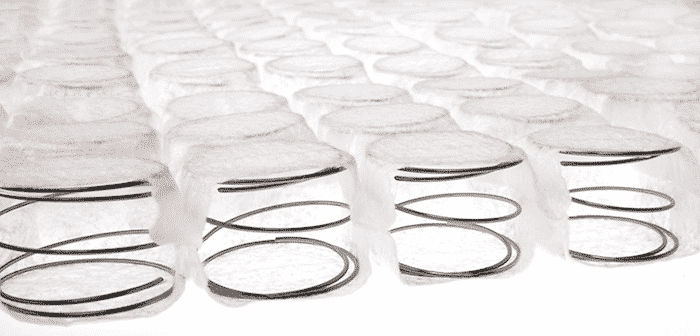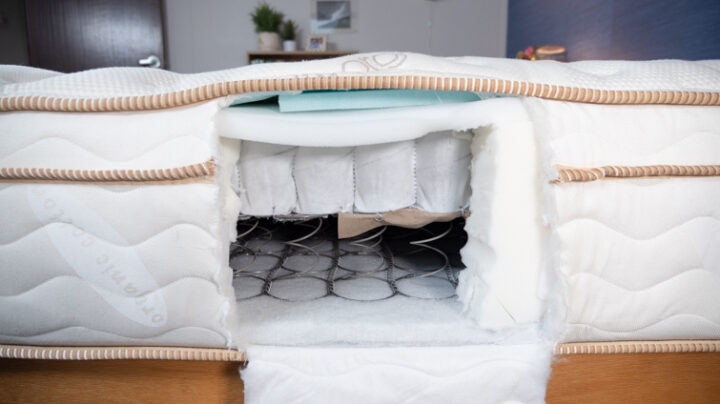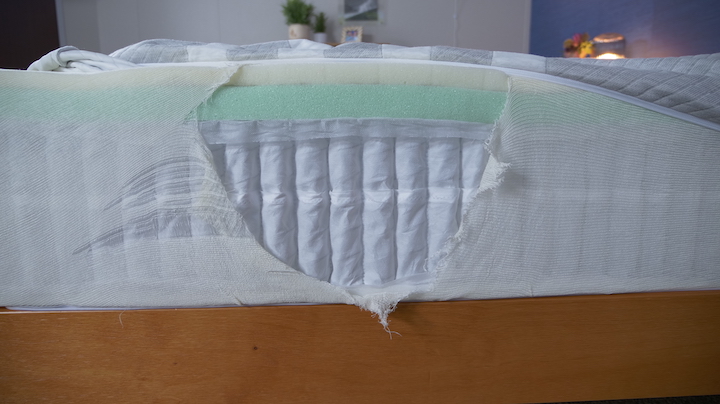Our choice of mattress plays a pivotal role in shaping our sleep and comfort throughout the night. Among the various options available, coil mattresses have maintained their popularity, offering a harmonious blend of comfort and support that has stood the test of time. As we explore the science, it becomes evident that coil mattresses are not just a traditional choice; they have been specifically engineered and refined over decades to offer excellent comfort and support.
In this article, I’ll explore the inner workings of coil mattresses and analyze the benefits they bring to our sleep quality. I’ll also debunk common myths surrounding this iconic bedding choice. So, let’s uncover the secrets that make coil mattresses an enduring cornerstone of modern sleep technology.
What Are Mattress Coils?
Mattress coils are inserted into the core layer of the mattress in order to enhance its support. This practice was developed in the mid-1800s. More recently, some companies put miniature coils in the comfort layer for even more support.

Coil vs Spring Mattress
While both incorporate springs to provide support, their construction and performance differ significantly. Spring mattresses generally feature interconnected springs that work as a single unit, creating a consistent level of support across the entire surface.
Coil mattresses, often referred to as innerspring mattresses, consist of coils or springs that are individually encased. This design allows for greater customization and targeted support, as each coil responds independently to the body.
While both spring and coil mattresses have their merits, the choice between them ultimately hinges on personal preferences for support, motion isolation and overall comfort.
Types of Mattress Coils
There are three main types of mattress coils that you should be aware of when shopping for an innerspring or hybrid mattress.
Hourglass Coils
Also known as Bonnell coils, Hourglass coils have a thinner portion in the middle that bends with a slight bit of pressure. The thicker portions of the coil offer more support.
Pocketed Coils
Pocketed coils are wrapped individually in a pocket of fabric. This often means they last a bit longer than hourglass coils.
Continuous Coils
Continuous coils are made up of a single length of wire that is woven into many different coils. These do not offer isolated support, but they can offer overall support if the mattress has a thick comfort layer.
Which Mattress Types Have Coils?
There are a couple of different mattress types that utilize coils. Let’s take a closer look:
Innerspring
Innerspring mattresses have a coil layer at the bottom and a comfort layer on top, which protects the sleeper from feeling the coils on their back during the night. These mattresses usually feel very bouncy and responsive, making it easy for people to move around on top of them. If this sounds like the right fit for you, find some of the best innerspring mattresses on the market.

Hybrid
Hybrid mattresses also have coils at the bottom, but they tend to have thicker comfort layers. These comfort layers are made of either memory foam or latex foam. They offer a great balance of comfort and support, and most of them feel breathable and cool.

What Is Coil Gauge Count?
The coil gauge count is the term used to refer to the thickness of the coils used within a mattress. Most mattresses have a gauge count of somewhere between 12 and 15. If you like a firm mattress, then choose a mattress with a lower gauge count as the coils are thicker. If you prefer a softer mattress, then a higher gauge count will suit you best.
How Many Coils Should a Mattress Have?
The number of coils required for a mattress will depend on the size of the mattress you’re looking for.
| Size | Minimum Coil Count |
| Twin Mattress | 300 |
| Twin XL Mattress | 300 |
| Full Mattress | 300 |
| Queen Mattress | 400 |
| King Mattress | 480 |
| California King Mattress | 800 |
Mattress Coil Pros and Cons
How to Prolong Coil Mattress Lifespan
If you want to make your mattress last longer, there are a couple of techniques you can use:
- Use a mattress protector
- Rotate your mattress frequently
- Vacuum and clean your mattress often
FAQs
Are coil mattresses bad for you?
No, coil mattresses are not bad for you unless they are old and worn out, in which case they will not be good for your back.
Are mattress coils noisy?
Old coil mattresses tend to start squeaking as they get older, which may indicate that it’s time to replace your mattress. If you don’t want to deal with a squeaky mattress, try opting for one of the best memory foam mattresses instead.
Are coil mattresses better than foam?
Whether you will prefer a coil mattress or a foam mattress is all up to personal preference. Memory foam mattresses tend to feel slow-moving and plush, but they have a tendency to trap body heat. Coil mattresses feel bouncy and responsive, which makes it easy to move around on top of the bed, but it also means that they don’t isolate motion very well.
Can you use a coil mattress on an adjustable bed?
Many coil mattresses can be placed on adjustable frames, but not all of them. Take a look at our list of the best mattresses for adjustable bases for some good options.
Can you flip or rotate a coil mattress?
You should rotate your coil mattress, however, most modern mattresses are not made to be flipped. So it’s best to check your mattress care instructions to find out whether your coil mattress can be flipped. You can also check our our list of the best flippable mattresses.

